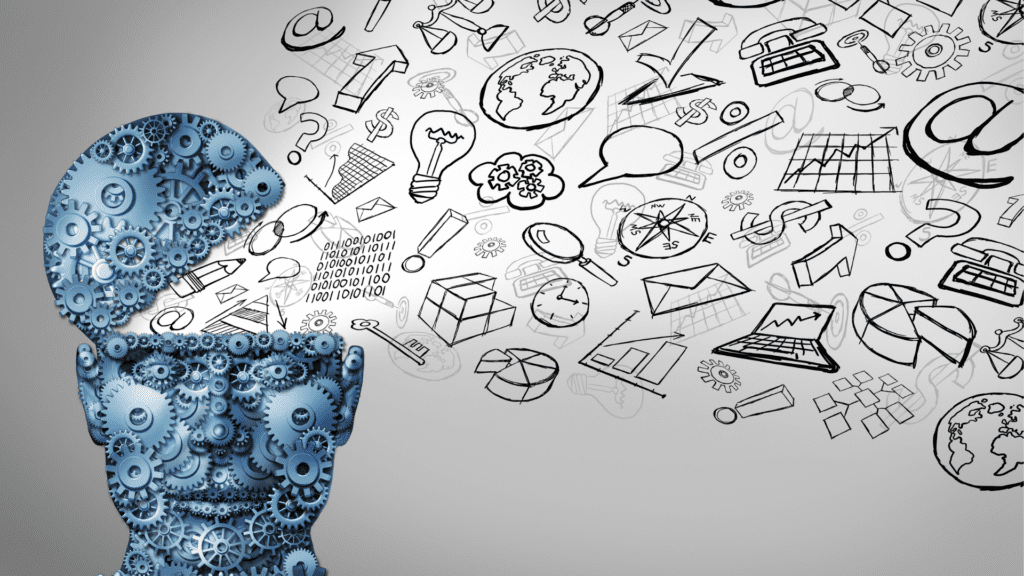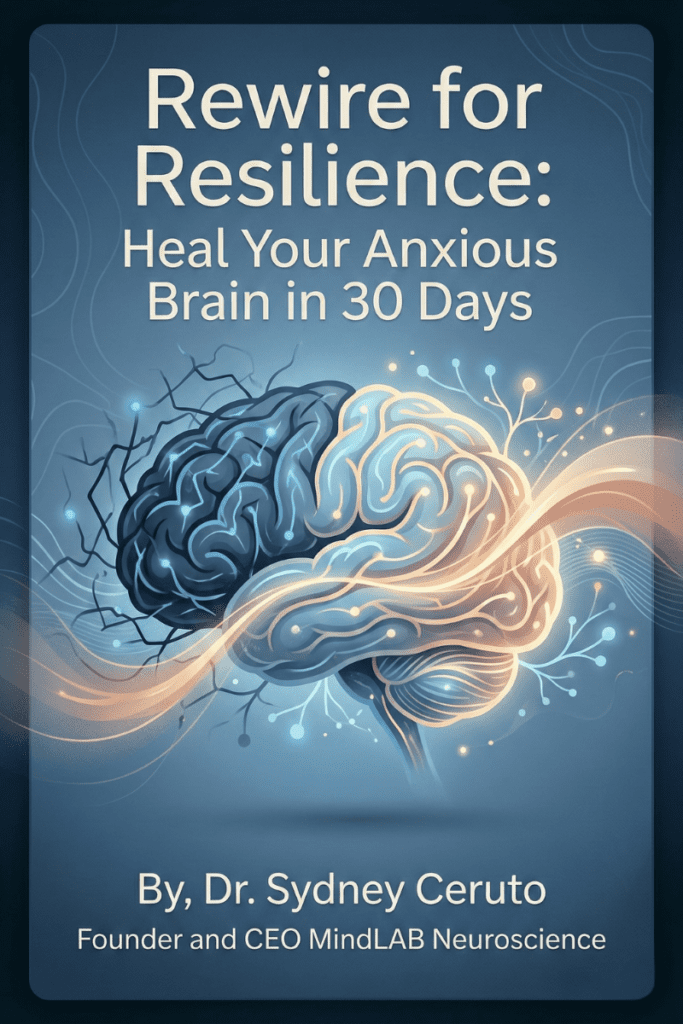Cognitive Distortions: Their Impact on Brain Function and Mental Health
Cognitive distortions are systematic patterns of deviation from objective reality in our thinking processes. These mental shortcuts or glitches in thinking are common to all humans and can be understood as the brain’s attempt to rapidly make sense of the world around us. However, when these distortions become habitual or extreme, they can significantly influence our brain function and overall mental well-being.
Understanding Cognitive Distortions
Cognitive distortions are not inherently pathological; they are a normal part of human cognition. We all possess some form of these thinking patterns to varying degrees. They can be seen as the brain’s way of simplifying complex information, allowing us to make quick judgments and decisions. However, when these distortions become persistent and exaggerated, they can lead to a skewed perception of reality and contribute to various mental health issues.
Some common cognitive distortions include:
- All-or-nothing thinking
- Overgeneralization
- Mental filtering
- Jumping to conclusions
- Catastrophizing
- Personalization
These distortions can manifest in various ways, from assuming the worst in a situation to taking personal responsibility for events beyond one’s control.
The Universality of Cognitive Distortions
It’s crucial to understand that everyone experiences cognitive distortions to some extent. They are not a sign of weakness or mental illness but rather a fundamental aspect of human cognition. However, the frequency, intensity, and impact of these distortions can vary greatly among individuals.
Factors that can influence the prevalence and severity of cognitive distortions include:
- Personal experiences and upbringing
- Cultural background
- Stress levels
- Current life circumstances
- Underlying mental health conditions
Impact on Brain Function and Mental Health
When cognitive distortions become pronounced, they can significantly influence our brain function and mental well-being:
- Neuroplasticity and Reinforced Neural Pathways: Repeated engagement in distorted thinking patterns can strengthen the neural pathways associated with these thoughts, making them more automatic and difficult to change over time.
- Stress Response and Cortisol Production: Cognitive distortions can trigger the brain’s stress response, leading to increased production of cortisol, the primary stress hormone. Chronic elevation of cortisol levels has been linked to various health issues, including:
- Impaired cognitive function
- Weakened immune system
- Increased risk of depression and anxiety
- Sleep disturbances
- Cardiovascular problems
- Impact on Decision-Making and Problem-Solving: Distorted thinking patterns can significantly impair our ability to make sound decisions and solve problems effectively. They can lead to biased information processing, causing us to overlook important details or misinterpret situations.
- Emotional Regulation: Cognitive distortions can interfere with our ability to regulate emotions effectively. They can amplify negative emotions and diminish positive ones, leading to mood disorders and emotional instability.
- Self-Perception and Relationships: These distortions can negatively impact how we view ourselves and interact with others. They can lead to low self-esteem, social anxiety, and difficulties in maintaining healthy relationships.
Recognizing and Addressing Cognitive Distortions
Understanding the prevalence and impact of cognitive distortions is the first step towards addressing them. By recognizing these patterns in our thinking, we can begin to challenge and reframe them, leading to more balanced and realistic perceptions. Techniques such as cognitive restructuring, mindfulness practices, can be effective in identifying and modifying distorted thinking patterns. These approaches aim to create new, healthier neural pathways, ultimately improving brain function and mental health.In conclusion, while cognitive distortions are a universal aspect of human cognition, their exaggeration or persistence can significantly impact our mental well-being and brain function. By understanding these distortions and actively working to address them, we can foster more adaptive thinking patterns, enhance our cognitive flexibility, and improve our overall mental health.

Neuroplasticity and Reinforced Neural Pathways
The brain’s ability to adapt and form new neural connections, known as neuroplasticity, plays a crucial role in the persistence of cognitive distortions. Dr. Michael Chen, a neuropsychologist at Harvard Medical School, explains, “When we repeatedly engage in distorted thinking patterns, we strengthen the neural pathways associated with those thoughts. Over time, these patterns become more automatic and difficult to change.”
Stress Response and Cortisol Production
Cognitive distortions can trigger the brain’s stress response, leading to increased production of cortisol, the primary stress hormone. Chronic elevation of cortisol levels has been linked to various health issues, including:
- Impaired cognitive function
- Weakened immune system
- Increased risk of depression and anxiety
- Sleep disturbances
- Cardiovascular problems
Impact on Decision-Making and Problem-Solving
Distorted thinking patterns can significantly impair our ability to make sound decisions and solve problems effectively. A study published in the “Journal of Cognitive Neuroscience” found that individuals with a higher prevalence of cognitive distortions showed reduced activation in brain regions associated with logical reasoning and decision-making when faced with complex problems.
Neuroscience-Based Strategies for Overcoming Cognitive Distortions
Fortunately, neuroscience offers valuable insights into effective strategies for recognizing and overcoming cognitive distortions. By leveraging our understanding of brain function, we can develop targeted approaches to promote more balanced and realistic thinking patterns.
Neuroscience-Based Techniques for Cognitive Restructuring
Cognitive restructuring can be enhanced by incorporating neuroscience-based techniques that target specific brain functions and promote neuroplasticity. These approaches leverage our understanding of brain mechanisms to create more effective interventions for challenging distorted thoughts.
1. Mindfulness Meditation
Mindfulness practices have been shown to alter brain structure and function, particularly in areas associated with attention, emotion regulation, and self-awareness. A study published in the journal “Psychiatry Research: Neuroimaging” found that an 8-week mindfulness program led to increased gray matter density in the hippocampus, a region crucial for learning and memory.
Technique: Practice daily mindfulness meditation, focusing on present-moment awareness and non-judgmental observation of thoughts.
2. Neurofeedback Training
Neurofeedback is a technique that uses real-time brain imaging to help individuals learn to regulate their brain activity. This approach has shown promise in addressing cognitive distortions by targeting specific brain regions associated with distorted thinking.Technique: Engage in neurofeedback sessions with a trained professional, focusing on regulating activity in the prefrontal cortex and amygdala.
3. Cognitive Bias Modification
This technique aims to retrain automatic cognitive processes that contribute to distorted thinking. Research published in the “Journal of Behavior Therapy and Experimental Psychiatry” demonstrated that cognitive bias modification can effectively reduce anxiety and negative interpretations. Technique: Use computerized tasks designed to shift attention away from negative stimuli and towards positive or neutral information.
4. Emotional Regulation through Interoception
Interoception, the perception of internal bodily sensations, plays a crucial role in emotional experiences. Improving interoceptive awareness can enhance emotional regulation and reduce cognitive distortions.
Technique: Practice body scan exercises to increase awareness of internal sensations and their connection to emotions and thoughts.
5. Memory Reconsolidation
This technique leverages the brain’s ability to update and reconsolidate memories. By activating a memory and introducing new information, it’s possible to alter the emotional impact and associated beliefs.Technique: Identify a distorted belief, vividly recall a related memory, then introduce contradictory information to challenge and update the memory.By incorporating these neuroscience-based techniques into cognitive restructuring practices, individuals can more effectively rewire their brains for healthier, more balanced thinking patterns.
Mindfulness and Meditation
Mindfulness practices have gained significant attention in neuroscientific research for their potential to reshape brain function and promote mental well-being. Regular mindfulness meditation has been shown to:
- Reduce amygdala reactivity
- Enhance prefrontal cortex activity
- Improve emotional regulation
- Increase gray matter density in brain regions associated with learning and memory
I am constantly emphasizing the importance of mindfulness in managing cognitive distortions to my clients. What needs to be understood is that by cultivating present-moment awareness, we can create a mental space between our thoughts and our reactions, allowing us to respond more skillfully to challenging situations. This is what I have coined the “pause button“.

Harnessing Neuroplasticity for Cognitive Restructuring
Neuroplasticity, the brain’s remarkable ability to reorganize itself by forming new neural connections throughout life, is a powerful tool for creating more advantageous ways of thinking, perceiving, behaving, reacting, and emoting. This capacity for change allows the brain to adapt in response to new experiences, learning, and environmental changes, making it possible to build new neural pathways that support healthier and more effective cognitive and emotional patterns.
Understanding Neuroplasticity
Neuroplasticity refers to the brain’s ability to change its structure and function in response to experience and learning. This adaptability is crucial for recovery from brain injuries, learning new skills, and modifying existing behaviors. Neuroplasticity operates at multiple levels, including:
- Chemical Changes: These occur when the brain alters the production of neurotransmitters and other chemicals to support new learning and memory formation.
- Structural Changes: These involve the growth of new neurons (neurogenesis) and the formation of new synaptic connections between neurons.
- Functional Changes: These refer to the brain’s ability to shift functions from damaged areas to healthy areas, enhancing overall cognitive and emotional resilience.
Techniques to Leverage Neuroplasticity
By understanding and harnessing neuroplasticity, we can intentionally create new, more advantageous ways of thinking and behaving. Here are some neuroscience-based techniques to promote positive neuroplastic changes:
1. Mindfulness Meditation
Mindfulness meditation has been shown to enhance neuroplasticity by increasing gray matter density in brain regions associated with learning, memory, and emotional regulation. Regular mindfulness practice can help individuals become more aware of their thoughts and emotions, allowing them to respond more skillfully to cognitive distortions.Technique: Engage in daily mindfulness meditation, focusing on present-moment awareness and non-judgmental observation of thoughts and feelings.
2. Cognitive Bias Modification
Cognitive bias modification involves training the brain to shift attention away from negative stimuli and towards positive or neutral information. This technique can help rewire automatic cognitive processes that contribute to distorted thinking.Technique: Use computerized tasks designed to retrain attention and interpretation biases, gradually reducing the impact of negative cognitive distortions.
3. Neurofeedback Training
Neurofeedback uses real-time brain imaging to help individuals learn to regulate their brain activity. By providing feedback on brainwave patterns, neurofeedback can target specific brain regions associated with cognitive distortions, promoting healthier neural activity.Technique: Participate in neurofeedback sessions with a trained professional, focusing on enhancing activity in the prefrontal cortex and reducing hyperactivity in the amygdala.
4. Emotional Regulation through Interoception
Interoception, the awareness of internal bodily sensations, plays a crucial role in emotional experiences and cognitive processes. This “sixth sense” allows us to perceive and interpret signals from our body, such as heart rate, breathing, and digestive sensations. Improving interoceptive awareness can significantly enhance emotional regulation and reduce the impact of cognitive distortions.Recent neuroscientific research has shown that the insula, a region of the cerebral cortex, is central to interoceptive processing. The insula integrates sensory information from the body with cognitive and emotional experiences, making it a key player in our ability to recognize and manage our emotions.Techniques for Enhancing Interoception:
- Body Scan Exercises: Practice systematic body scan meditations, focusing attention on different parts of the body sequentially. This increases awareness of subtle bodily sensations and their connection to emotions and thoughts.
- Breath Awareness: Pay close attention to the sensations of breathing, noticing the rise and fall of the chest and abdomen. This can help anchor attention in the present moment and provide valuable data about emotional states.
- Heart Rate Variability (HRV) Training: Use biofeedback devices to become more aware of heart rate patterns and learn to influence them through breathing techniques. This can improve emotional resilience and reduce anxiety.
- Mindful Movement: Engage in practices like yoga or tai chi that emphasize the connection between movement and bodily sensations. This can enhance overall body awareness and emotional regulation.
- Emotion-Body Mapping: Create a personal “body map” of where you typically feel different emotions. This can increase awareness of the physical manifestations of emotions and aid in early recognition of emotional states.
Benefits of Improved Interoception:
- Enhanced Emotional Awareness: Better recognition of emotional states as they arise, allowing for more timely and appropriate responses.
- Reduced Cognitive Distortions: Improved ability to distinguish between thoughts and bodily sensations, reducing the likelihood of misinterpreting physical sensations as catastrophic events.
- Increased Stress Resilience: Greater capacity to recognize and manage stress responses before they escalate.
- Improved Decision-Making: Enhanced ability to incorporate “gut feelings” into decision-making processes, leading to more balanced choices.
By cultivating interoceptive awareness, individuals can develop a more nuanced understanding of their emotional landscape. This increased awareness serves as a powerful tool for challenging and reframing cognitive distortions, as it provides a direct, embodied experience that can contradict distorted thought patterns. Regular practice of interoceptive techniques can lead to lasting changes in brain structure and function, particularly in regions associated with emotional regulation and self-awareness.
5. Memory Reconsolidation
Memory reconsolidation leverages the brain’s ability to update and modify existing memories. By activating a memory and introducing new, contradictory information, it is possible to alter the emotional impact and associated beliefs.Technique: Identify a distorted belief, vividly recall a related memory, and then introduce new, balanced information to challenge and update the memory.
Practical Applications of Neuroplasticity
Incorporating these techniques into daily life can help individuals build new neural pathways that support more advantageous ways of thinking, perceiving, and behaving. Here are some practical steps to harness neuroplasticity:
- Engage in New Experiences: Continuously seek out new and challenging experiences to stimulate brain growth and adaptability.
- Practice Consistently: Regular practice of new skills and behaviors reinforces neural connections, making them more robust over time.
- Stay Physically Active: Physical exercise promotes the production of brain-derived neurotrophic factor (BDNF), which supports neuroplasticity and overall brain health.
- Create a Stimulating Environment: Surround yourself with a stimulating environment that encourages learning and growth, such as engaging in intellectually challenging activities and social interactions.
Conclusion
Neuroplasticity offers a powerful framework for understanding how we can reshape our brains to support healthier and more effective cognitive and emotional patterns. By leveraging techniques such as mindfulness meditation, cognitive bias modification, neurofeedback, interoception, and memory reconsolidation, we can intentionally create new neural pathways that promote mental well-being and resilience. Embracing the principles of neuroplasticity allows us to take an active role in shaping our cognitive landscapes, leading to a more balanced and fulfilling life.
Physical Exercise and Brain Health
Regular physical exercise has been shown to have numerous benefits for brain function and mental health, particularly in relation to managing cognitive distortions. Recent neuroscientific research I have conducted at NYU Steinhardt, highlighted the profound impact of aerobic exercise on brain structure and function. I found that engaging in physical exercise is akin to making a high-yield investment in your cognitive health. It offers immediate benefits to your brain function while simultaneously safeguarding your long-term neurological well-being. This dual-action approach makes physical activity a powerful tool for enhancing and protecting cognitive capabilities both now and in the future.
Engaging in regular physical activity can:
- Increase the production of brain-derived neurotrophic factor (BDNF), a protein that promotes neuroplasticity and the formation of new neural connections.
- Enhance prefrontal cortex function and executive control, improving our ability to regulate emotions and challenge distorted thoughts.
- Reduce stress and anxiety levels by modulating the brain’s stress response system and decreasing cortisol production.
- Improve mood and overall well-being through the release of endorphins and other neurotransmitters associated with positive emotions.
- Boost cognitive function, including attention, memory, and problem-solving skills, which can aid in recognizing and addressing cognitive distortions.
Neuroscientific studies have consistently demonstrated that physical activity acts as a powerful tool for brain health. It’s akin to a high-yield investment for cognitive function, offering both immediate improvements and long-term protection against cognitive decline. By incorporating regular exercise into our routines, we can actively shape our brain’s structure and function, creating a more resilient foundation for managing cognitive distortions and promoting overall mental wellness.
The Role of Neuroscience-Based Coaching in Addressing Cognitive Distortions
As a neuroscience-based life and career coach, understanding the intricate relationship between cognitive distortions and brain function is essential for helping clients achieve lasting positive change. By integrating neuroscientific principles into coaching practices, we can provide targeted interventions that address the root causes of distorted thinking patterns.At MindLab Neuroscience, we employ a range of evidence-based techniques to help clients overcome cognitive distortions and enhance their mental well-being:
- Neurocognitive assessments to identify specific patterns of distorted thinking
- Personalized mindfulness and meditation practices tailored to individual needs
- Cognitive restructuring exercises based on the latest neuroscientific research
- Brain-based goal-setting and decision-making strategies
- Stress management techniques that leverage our understanding of the brain’s stress response
By combining these approaches with a deep understanding of neuroscience, we empower our clients to rewire their brains for more balanced and realistic thinking, leading to improved mental health and overall life satisfaction.
Final Thoughts: Embracing Neuroscience for Mental Wellness
The study of cognitive distortions and brain function in neuroscience offers a fascinating window into the intricate workings of the human mind. By understanding the neural mechanisms underlying distorted thinking patterns, we can develop more effective strategies for promoting mental well-being and resilience.As we continue to unravel the complexities of the brain, it becomes increasingly clear that our thoughts and perceptions are not fixed but malleable. With the right tools and knowledge, we can harness the power of neuroplasticity to overcome cognitive distortions and cultivate a more balanced and informed perspective on the world around us.By embracing neuroscience-based approaches to mental wellness, we open the door to a future where individuals can take an active role in shaping their cognitive landscapes, leading to healthier, more fulfilling lives. As we move forward, the integration of neuroscientific insights into mental health practices promises to revolutionize our approach to personal growth and well-being, offering hope and empowerment to individuals seeking to overcome the challenges of distorted thinking.





